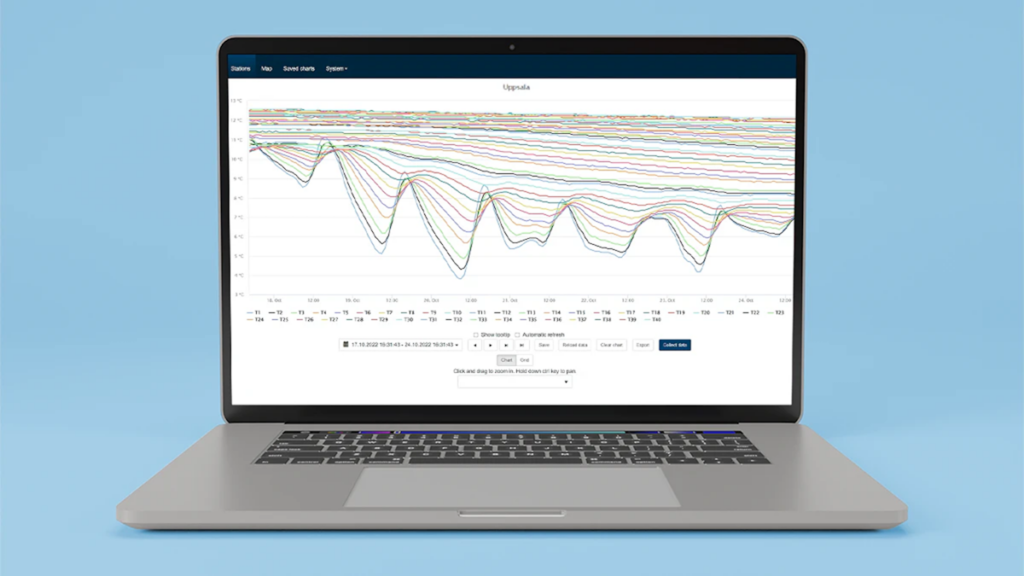Application
H2 is a general data acquisition system that, in addition to Scanmatic’s own stations, also supports the collection from other data loggers. A wide range of protocols, both standardized and proprietary, are supported. Data is stored in an open SQL database and can be displayed in a web-based presentation module or forwarded to parent systems (eg operating centers) on standard protocols or file formats.

Technology
H2 runs as a service on all modern Windows platforms and has web-based management and presentation tools. For easy access to collected data from third-party tools, there is a well-documented RestAPI as well as a SignalR interface. For access control to stations and data, user groups and station groups are used. A user group can have access to only selected stations and it is also possible to restrict access to individual measurements to selected user groups. H2 has its own module for calculating new measurement values based on collected data. This can be done, for example. be conversion between different units or calculation of water flow from water level. Notification of events based on e.g. Limit values can be done via mail and SMS.
Data Acquisition solution

Scanmatic offers a wide range of data collection solutions used in different applications in the energy industry. The solutions usually consist of one or more data loggers and a number of sensors that measure different parameters. In addition, there is a data collection system that collects data from the various data collection units. The data collection system can be standalone or connected to SCADA or other top systems.
Vendor independent
Scanmatic is a vendor independent system integrator that offers both proprietary data loggers and data collection units from other vendors to provide the best solution for the user. There are different types of data collection devices and some relevant devices are shown below:
- Dataloggers
- Field stations / IED (Intelligent Electronic Device)
- RTU
- PLC
- Industry-PCs
- IO-controllers
The data collection unit communicates with a data collection system or with a top system e.g. SCADA. Communication usually takes place over classic serial interfaces such as RS232, RS485 or RS422 or packet-based interfaces such as Ethernet. The communication protocol used is usually a standard protocol such as. IEC 101/104. Proprietary protocols are often used between the data collection system and the data collection device. Standard communication protocols are usually used between the data collection device and other top systems such as SCADA. TCP / IP, Modbus or IEC-101/104. The solution handles present values and historical values, messages and commands. The measurements are stored locally in the data collection unit before being regularly transmitted to the data collection system. The data collection system supports both regular questioning of data and spontaneous submission of data. The data collection system synchronizes the data collection units so that all the units have a common understanding of time. The sensors are connected to the data collection device using analog interfaces such as 4-20 mA loops, or digital interfaces such as Modbus or SDI-12. Different proprietary protocols (ASCII) between sensor and data collection device are also often used. There is also support for digital inputs and digital outputs for controlling external equipment and for transmitting messages and commands with existing equipment. The solution power supplies from one or more power sources e.g. mains voltage and battery or solar panel and battery. The equipment is mounted in a cabinet or other package adapted to the environment to be used.